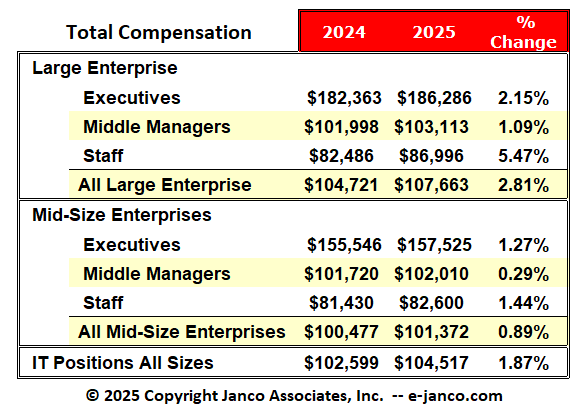 IT job search is getting harder
IT job search is getting harder
IT job search is getting harder - The IT job market is slowing down, use of contingency workers is picking up, and Congress has an unfinished fight ahead on the H-1B visa. In sum, this is going to be an interesting year for IT employment, politically and on the job front.
In quick summary, here are five of the major IT hiring trends.
- More electrical engineers do their own thing - IEEE-USA data shows that the number of electrical engineers declined by 35,000 last year, or about 10.5%.
What happened to them? This anecdote may give an idea of where electrical engineers are heading: Approximately 120,000 people attended a Maker Faire in the Bay Area last year, which draws many who are do-it- (DIY) inclined.
An attendee study, commissioned by Maker Media, which runs the event, found that 31% of the attendees identified themselves as engineers. The five top areas of interest at the event were science, electronics, robotics, 3D printing and innovation.
Some engineers may have moved into management consulting, software engineering and other IT occupations. U.S. Labor Department data doesn't show where these workers may have ended up, if anywhere. But last year, government data reported that 15,000 electrical engineers were unemployed.
Employers, increasingly, are hiring workers on a contingent or contract basis, say IT labor analysts. IT research firm Computer Economics said the use of contingent workers is at its highest since 1998.
- IT job growth slides - IT labor analysts agree that the pace of IT job creation began to slow late last summer. They don't agree on the number of jobs created in 2013, but that's because some use a broad set of labor occupations to track IT hiring, and others a more narrow set. But the hiring trend is clear.
TechServe Alliance, an industry group, said there were 197,000 IT jobs created in 2013. At the low end, Janco Associates puts this figure at 74,900. In the middle is Foote Partners, which said 128,500 jobs were added. Foote said that in the last five months of 2013, the pace of hiring declined by 60%.
The economy gets the blame for the slowdown in hiring. Victor Janulaitis, Janco's CEO, points to the declining labor participation rate, which fell last month to 62.8%, or 3.3 million fewer people in the labor force since 2007. This decline includes all occupations, but is nonetheless "causing many companies to consider whether they should expand IT staffs," said Janulaitis, in recent commentary about the hiring data.

Subscribe to our Newsletter to get this information delivered to your inbox as soon as it is released. SUBSCRIBE
Current Data - See Current IT Hiring Trends
Order IT Salary Survey Download IT Salary Survey Summary
- Salaries flat for computer science majors - The average starting salary for humanities and social science majors who graduated in 2013 increased 2.9%, the National Association of Colleges and Employers recently reported.
IT Median Salaries

For computer science majors, a category which includes a broad selection of IT degrees, starting salaries were down 0.2%. For those students with a specific computer science degree, starting salaries were up 0.5%.
The starting salaries for humanities and social science graduates averaged $38,045, compared with computer science graduates, whose starting salaries were still significantly higher at $59,084. For computer science degree holders specifically, the starting salary was $64,700
- Job ads that bury candidates with requirements
-Employers want workers who understand the business and technology. This trend is increasing the mix of requirements to get an IT job. Gartner estimates that by 2017, 50% of the IT roles will require business knowledge.
Foote Partners, said employers are also seeking a unique combination of skill sets, for instance, cloud administrators who are adept at automating the configuration and operations in a cloud environment by combining a variety of different skill sets around systems administration,virtualization and storage and network administration."
- More battles over H-1Bs -
After the U.S. Senate passed its immigration bill last spring allowing the H-1B cap to rise as high as 180,000 (from the current 85,000 ceiling), the bill stalled in the House. But this bill may be having an impact on technology hiring.
Most of the job growth in IT last year was in consulting areas represented heavily by H-1B visa holders using IT outsourcing firms, both onshore and offshore. Outside of those areas, there's no evidence of galloping growth in IT employment. The largest IT employment labor category, software developers, gained 19,000 jobs in 2013, bringing the total to about 1.1 million.
The Senate bill would impose new rules on large H-1B users. One key change is that if a company employs more than 50 workers, no more than half of its workers can be H-1B or L-1 workers.




